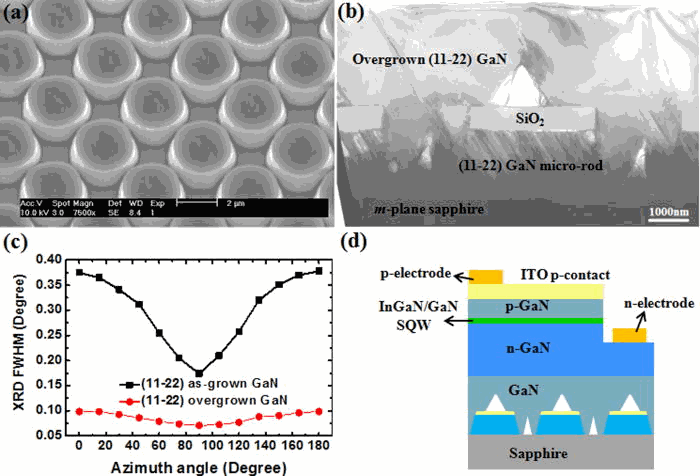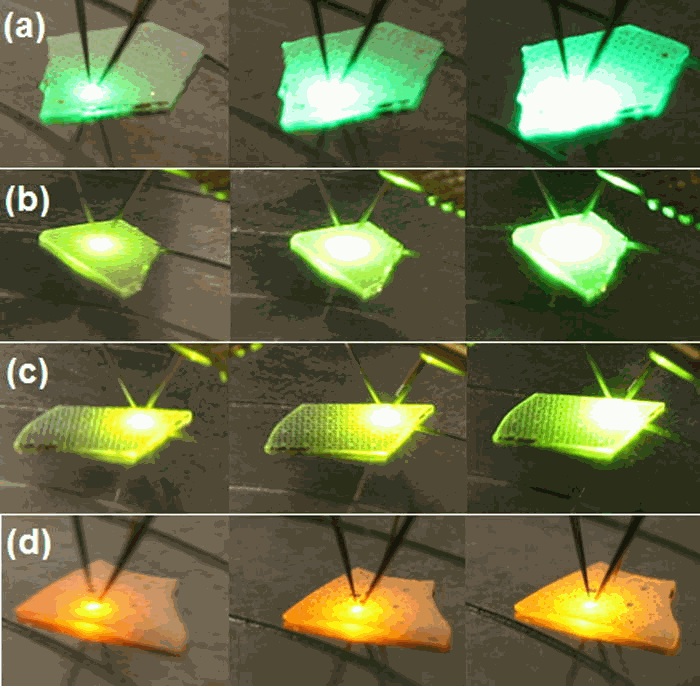A research team from Sheffield University has recently published there latest findings of growing LEDs on semi-polar GaN or sapphire on Applied Physics Letter recently.
 |
|
(a) SEM image of a micro-rod GaN template; (b) TEM image of the (11-22) GaN overgrown on micro-rods; (c) XRD FWHMs of the overgrown (11-22) GaN and (11-22) GaN template, measured at azimuth angles ranging from 0° to 180°; (d) schematic of (11-22) InGaN SQW LED. (Photo courtesy of Applied Physics Letter) |
The team from Sheffield University’s Department of Electronic and Electrical Engineering were able to demonstrate semipolar InGaN single-quantum-well LEDs that emitted green, yellow-green, yellow and amber colors. The LEDs were grown on an overgrown semipolar (11-22) GaN on micro-rod array templates, which were fabricated on GaN grown on m-plane sapphire.
Compared to commercial LEDs grown on the c-Plane, the research team’s green LEDs grown on the semipolar material showed significantly reduced blue-shift in the emission wavelength with increasing driving current. The same observations were made in blue-shifts for the yellow-green and yellow LEDs, which the researchers noted suggested an effective suppression in quantum confined Star effect in their LEDs.
 |
|
EL Emission photos of (a) green, (b) yellow-green, (c) yellow, and (d) amber LEDs, taken at 5, 20, and 100 mA. (Photo courtesy of Applied Physics Letter) |
On-wafer measurements yield a linear increase in the light output with the current, and external quantum efficiency demonstrated a significant improvement in the efficiency-droop compared to commercial c-plane LED. Electro-luminescence polarization measurements show a polarization ratio of about 25% in the semipolar LEDs.
The full report in Applied Physics Letter can be viewed here.













